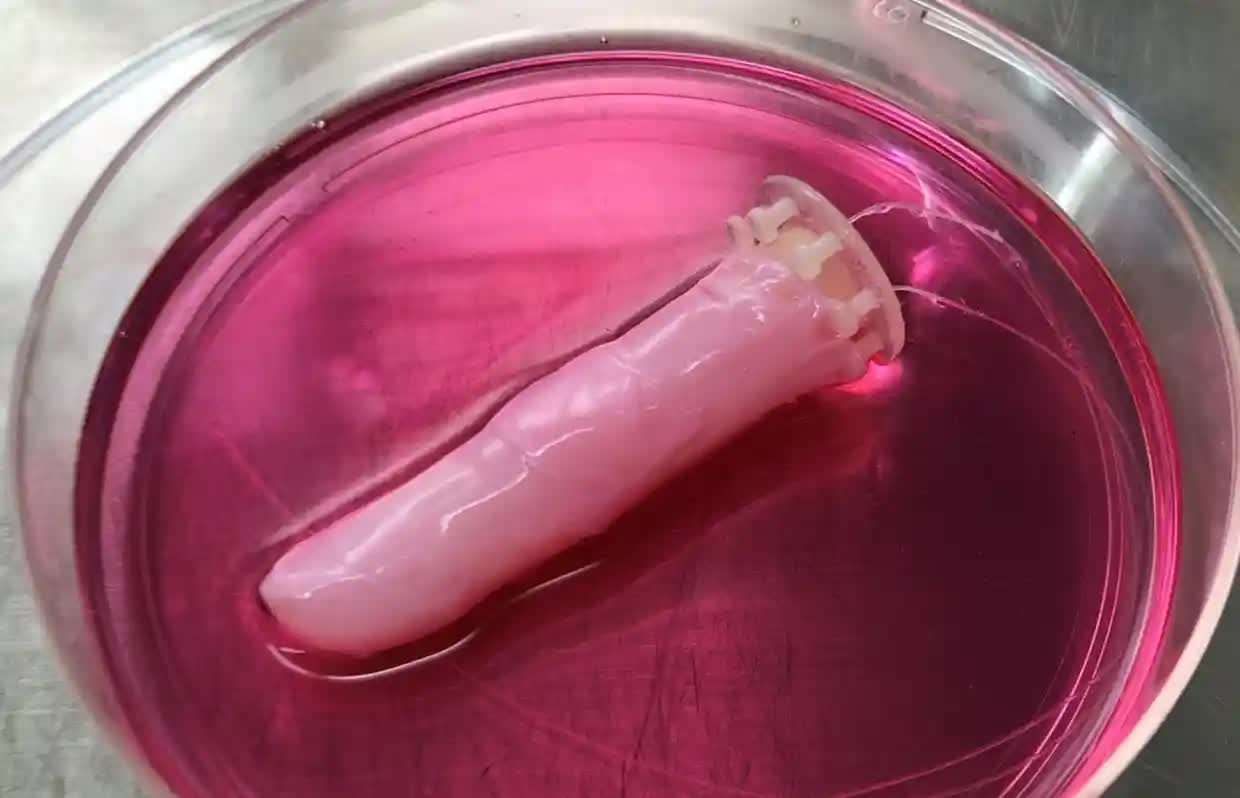WTF?! Japanese scientists who have presumably never seen any of the Terminator movies have found a way to wrap living skin around a robotic finger to make it feel worryingly real and "slightly sweaty," a move they say brings humanity one step closer to human-like robots who will definitely not wipe us all out.
The University of Tokyo team published a paper on the project in the journal Matter. It explains how a robotic finger was first submerged in a cylinder filled with a solution of collagen and human dermal fibroblasts, found in the skin's connective tissue. This provides a layer for the human epidermal keratinocytes to stick to---a primary cell type of the epidermis that also produces keratin, which binds the skin cells together, making the epidermis a waterproof barrier.
In addition to looking and feeling eerily similar to a human finger, the scientists found the skin could even heal itself after being cut, though it did require help from a band-aid-like sheet of collagen.

"The finger looks slightly sweaty straight out of the culture medium," said University of Tokyo professor Shoji Takeuchi. "Since the finger is driven by an electric motor, it is also interesting to hear the clicking sounds of the motor in harmony with a finger that looks just like a real one."
There is still work to be done before the skin can precisely mimic a human's. It's not as strong as human skin, and the lack of a circulatory system providing water and nutrients means it must be kept moist. The team hopes to address this by adding channels beneath the dermis that do the same job as blood vessels. Artificial sweat glands, sensory neurons, hair follicles, and nails are also future additions that will enhance the realism.
You might be wondering why we should be creating such human-like robots that bring on the uncanny valley effect and fears of machine uprisings. But as Takeuchi explains it, "I think living skin is the ultimate solution to give robots the look and touch of living creatures since it is exactly the same material that covers animal bodies." He said this will help "build a new relationship between humans and robots."
The scientists are also working on a skin-covered robot face, which hopefully won't speak in a thick Austrian accent.
